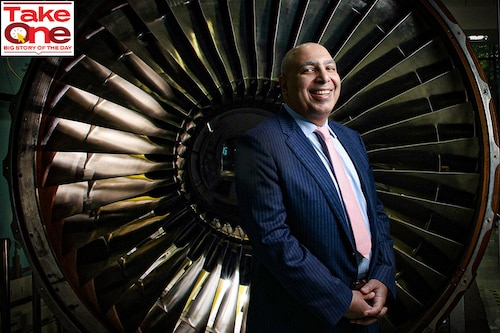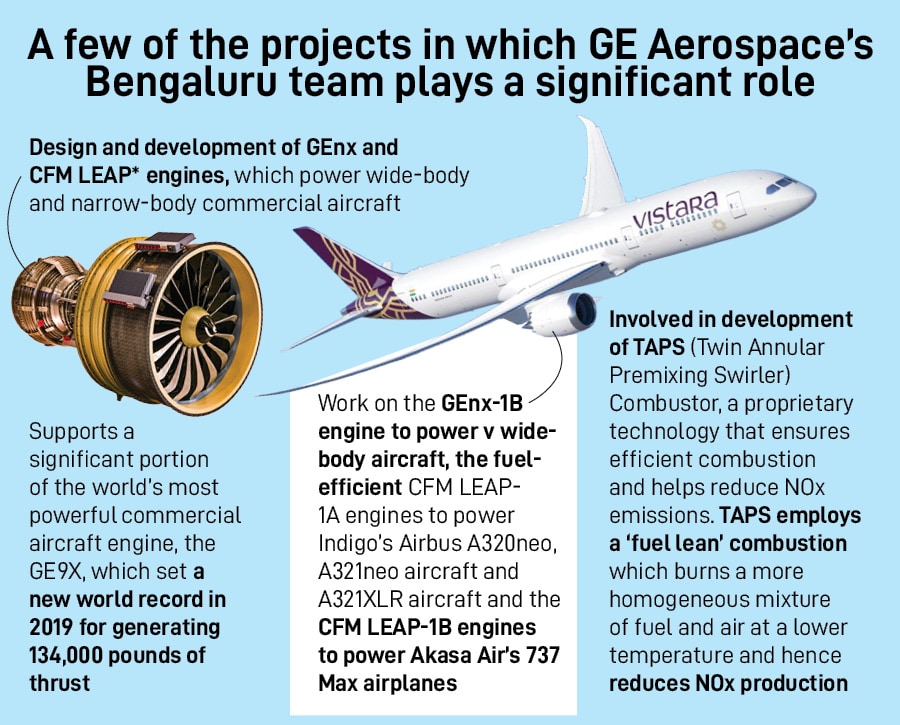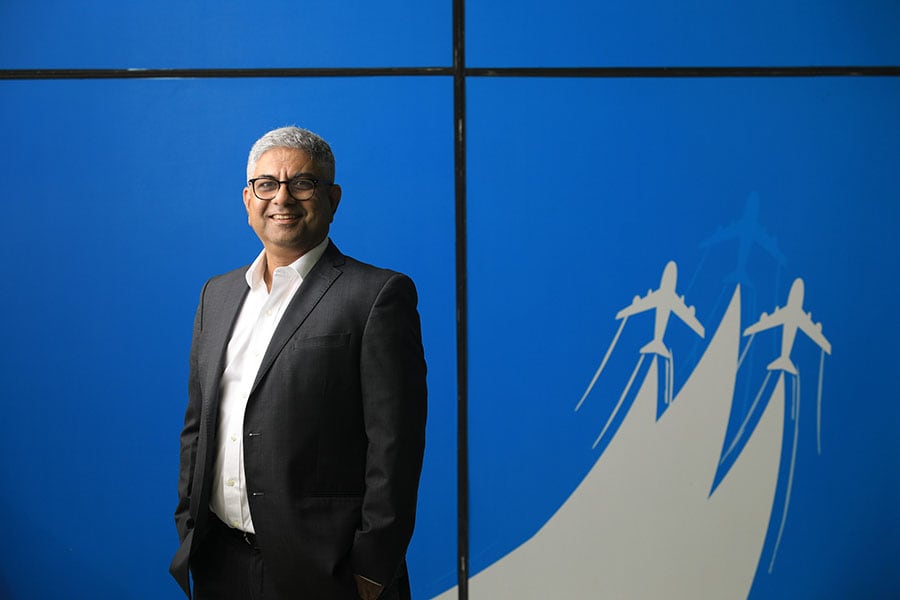GE Aerospace's soaring ambitions in India
The world's leading aircraft engine maker expects to be in the thick of both India's commercial and military aviation growth


GE Aviation, General Electric"s aviation arm, which will soon become an independent company, GE Aerospace, has big plans to ramp up its Indian operations.
The company is seeking to consolidate its position as the engine supplier of choice as India’s commercial airliners place record orders for hundreds of planes with demand for air travel soaring in the subcontinent post Covid.
GE Aerospace, whose Indian engineering team already plays a central role in developing its engines, including those that go on the larger, ‘wide-body’ aircraft, expects that India’s airlines will also buy more of such aircraft as international travel picks up too.
But also, on the military front, GE engines are expected to go into India’s second-generation light combat aircraft (LCA). And discussions are reportedly at very advanced stages for GE to help India to make those engines locally, via Hindustan Aeronautics Limited.
Even as this copy goes to print, an important objective for Prime Minister Narendra Modi’s June 22 Washington visit is said to be finalising this deal, according to an exclusive Reuters report.
From semiconductors and electronics to nuclear energy, India’s ‘aatmanirbhar’ push to become a more global player in hi-tech manufacturing and opening itself up more to foreign investment, is finding favour with the western democracies’ strategy to isolate Russia—an important defence and oil supplier to India—and reduce their dependence on Chinese manufacturing.
America may sign off on a deal for GE Aerospace to help HAL build the GE414 engine in India for the LCA Mk-II, according to Reuters. And Germany’s Thyssenkrupp is bidding to partner India’s Mazagon Dock Shipbuilders to supply six submarines to the Indian Navy, according to a recent Bloomberg report.
India is also developing an advanced medium combat aircraft (AMCA), which could eventually become a 5th-generation fighter aircraft. And various media reports suggest GE is collaborating with India on this as well, although an eventual engine supplier is yet to be finalised.

On the civil aviation front, “buying the latest LCD screen doesn’t make for a family experience… flying to a vacation or to go back and see your parents in a small town or remote part of India does, and to be able to do that frequently and to afford that," offers Mohamed Ali, GE Aerospace’s top engineer.
“That’s what this industry is enabling," Ali tells Forbes India during a recent visit to Bengaluru.
Ali, the company’s VP of engineering, is sometimes described in western media as the person responsible for over 30,000 aircraft engines. Raised by a single mother in Egypt, he then went to Cornell University, and after a PhD joined GE. He worked in multiple divisions, including oil and gas, before his current position.
He says he hates media interactions but loves to repeat a story about his excitement over his first flight at the age of 11, back in 1980, so he can contrast it with how flying today is a “non-event." GE expects that’s what will happen to tens of millions more of Indian households that are expected to move up into the middle class and upper middle-class brackets.
And multiple factors will contribute to a growth of international travel from and to India. From students seeking higher education in the US, Europe and Australia to Indian and foreign business executives and engineers flying to and from IT, pharma and auto companies and some 1,000 global R&D and engineering centres in India, to Indians vacationing abroad, demand for such flights is expected to rise.
Therefore GE expects India’s airlines to invest in more wide-body aircraft as well, Vikram Rai, GE Aerospace"s country head for India and Indonesia, told Reuters in May.
Alok Nanda, CEO of GE’s India Technology Center in Bengaluru, and CTO of GE South Asia, says the industry estimates the fleet of aircraft in India to grow 3X over the next 10-15 years. Engines built by GE Aerospace and its close technology and commercial partner Safran give flight to about 60 percent of India"s 700 plus commercial aircraft, Reuters notes, citing data from aviation analytics company Cirium.
 Alok Nanda, CEO of GE’s India Technology Center in Bengaluru, and CTO of GE South Asia Image: Selvaprakash Lakshmanan for Forbes India
Alok Nanda, CEO of GE’s India Technology Center in Bengaluru, and CTO of GE South Asia Image: Selvaprakash Lakshmanan for Forbes India
GE Aerospace’s 1,200 engineers in India, many of whom are at its India Technology Center in Bengaluru, already “own" the design and development of the engines that go on the widebodies, Nanda says.
The engines go on some of the best-known widebodies from its ‘airframer’ partners, the duopoly of Boeing in the US and Airbus in Europe, such as Boeing 777, which uses the GE90 series engines, and the Airbus A330, which uses the GE CF6 family of engines.
From an engineering technology perspective, GE Aerospace came to India in 1999, starting off as an engineering analysis centre of excellence in a joint venture with Tata Consultancy Services. Very soon GE realised that the engineers and scientists at the centre would generate strong intellectual property.
Therefore in 2003, GE acquired the whole stake and the team moved to the India Technology Centre, or the John F Welch Technology Centre, which was started in 2000. GE has invested some $200 million in that centre, and the multidisciplinary team there has generated more than 4,000 patents for GE, according to the company.
Since then, GE Aerospace’s India team has worked on every major engine project, from the GE90 to its successor today the GE9X, which is considered the most powerful commercial aircraft engine. The team has also made significant contributions to the GEnx engine and the LEAP (leading edge aviation propulsion) engine developed by CFM International, a 50:50 joint venture between GE and Safran Aircraft Engines.
“We progressed from doing engineering analysis to owning the hardware, owning the subsystems, owning modules," Nanda says. The latest engine that GE is developing, the GE9X, almost 60 percent of it has been designed from conceptual design to certification at Bengaluru, he says.
The team here also contributes to GE’s ongoing projects to develop sustainable technologies for the future, including its open-fan architecture, and its AI and machine learning-based products—a recent example is a novel blade inspection tool based on computer vision that was designed by the Bengaluru team, Nanda says.
Nanda spent the first nine years of his career after engineering college at India’s Defence Research and Development Organisation, before joining GE, where he’s worked for some 23 years now.
He points out that the GE Aerospace team in India has accumulated over two decades of deep engineering expertise and has truly come of age exactly at a time when Indian aviation is looking at its next decade or more of strong growth.
“Now on top of that, think about the potential with military, with the LCA being powered by a GE engine. If that expands to AMCA and other engines, I think we have a great opportunity where design, manufacturing, and all the elements of a successful industry can all be within the country," he says.
In addition to state-run HAL, GE has partnerships with the Tata Group via Tata Advanced Systems (TASL), Mahindra Aerostructure, Godrej & Boyce and others, which contribute to aircraft component exports. In November 2022, GE Aerospace and TASL extended an agreement for the Tata company to continue to produce and supply several commercial aircraft engine components to GE’s global engine manufacturing factories.
The multi-year contract was valued at more than $1 billion, according to a GE press release at the time. The engine parts are made at the Tata Centre of Excellence for Aero Engines in Hyderabad, which was established in 2018 to manufacture components for the LEAP engines.
Ali says “the sky is the limit" for India becoming a much more significant exporter in aviation. His latest visit to India was to get an on-the-ground update in person since Covid had made visits difficult in recent years. But he also likes to cite the Japanese ‘Gemba’ method of learning.
That is about the action of going to see the actual process with one’s own eyes, understanding the work, asking questions and so on. And “India is where the action is," he says.
First Published: Jun 09, 2023, 13:20
Subscribe Now